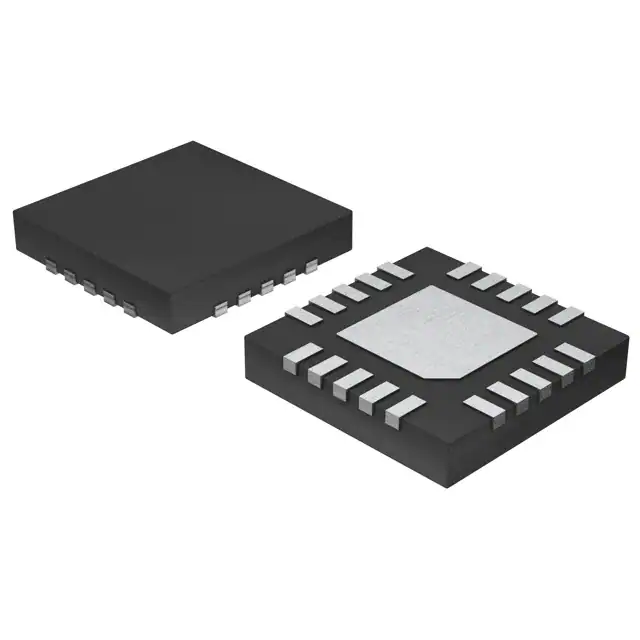Maximizing the Potential of the ISD2110YYI Chip: Common Issues and Solutions for Enhanced Functionality
Release Date: 08-23, 2024
The ISD2110YYI chip is a versatile, high-performance integrated circuit widely used in various audio playback applications. Whether you’re designing a voice alert system, a talking toy, or an instructional device, this chip offers an array of features that make it ideal for creating high-quality audio output. However, to fully harness its capabilities, it’s crucial to understand potential issues that may arise and how to resolve them effectively. This guide will delve into the common problems users face with the ISD2110YYI chip and offer practical solutions to ensure optimal functionality.
Understanding the ISD2110YYI Chip
The ISD2110YYI chip belongs to the ISD2100 series, known for its ability to store and play back audio. This chip integrates voice prompts, sound effects, and various other audio clips, making it a staple in products where sound playback is essential. With a storage capacity of 10 seconds of audio at 8kHz sampling frequency, this chip is compact yet powerful, delivering clear audio output suitable for a range of applications.
Common Issues and Solutions
1. Low Audio Quality
- Problem: One of the most common issues with the ISD2110YYI chip is low audio quality, often characterized by distortion, noise, or unclear sound.
- Solution: Audio quality issues typically stem from incorrect sampling rates or poor input signal quality. Ensure that the audio signal fed into the chip is clean and well-conditioned. Additionally, use a sampling rate appropriate for your application—higher sampling rates provide better audio quality but at the expense of storage time. It’s also advisable to use high-quality microphones and preamplifiers to reduce noise and distortion in the recorded audio.
2. Limited Playback Time
- Problem: The 10-second playback limitation can be restrictive in applications that require longer audio clips.
- Solution: To extend playback time, consider using multiple ISD2110YYI chips in a cascaded configuration. This allows you to store and play longer audio sequences by sequentially triggering each chip. Alternatively, compressing the audio can help maximize the chip’s storage capacity, although this may impact sound quality. Careful balance between compression and audio clarity is essential to meet your project’s specific requirements.
3. Power Supply Noise
- Problem: Power supply noise can introduce unwanted artifacts into the audio output, leading to clicks, pops, or hums during playback.
- Solution: Power supply noise can be minimized by using decoupling capacitors close to the chip’s power supply pins. A combination of ceramic and electrolytic capacitors is recommended to filter out both high-frequency and low-frequency noise. Additionally, ensure that the power supply is stable and regulated, and avoid sharing the chip’s power supply with high-power components that could introduce noise.
4. Inconsistent Playback Volume
- Problem: Users may experience inconsistent playback volume, where the audio output is too low or too high for certain applications.
- Solution: Volume inconsistencies can be addressed by adjusting the input signal level before it reaches the chip. Implementing an automatic gain control (AGC) circuit can help maintain consistent volume levels by dynamically adjusting the input gain. Additionally, fine-tune the chip’s internal amplifier settings to ensure that the output volume matches your project’s needs.
5. Complex Triggering Mechanism
- Problem: The ISD2110YYI chip’s triggering mechanism can be complex, especially in projects requiring multiple audio tracks or interactive features.
- Solution: Simplify the triggering process by using a microcontroller to manage playback sequences. The microcontroller can handle complex logic and trigger the appropriate audio track based on user input or other signals. This approach not only simplifies the wiring and logic but also allows for more flexibility in how audio is triggered and controlled.
6. Overheating Issues
- Problem: Continuous operation of the ISD2110YYI chip, especially in high-temperature environments, can lead to overheating, which may reduce the chip’s lifespan or cause malfunction.
- Solution: Overheating can be mitigated by ensuring proper ventilation and heat dissipation in your device’s design. Use heat sinks or thermal pads to draw heat away from the chip, and avoid placing the chip near heat-generating components. Additionally, monitor the chip’s operating temperature, and if necessary, incorporate thermal protection circuitry to prevent damage from overheating.
7. Inadequate Signal Isolation
- Problem: Poor signal isolation can lead to crosstalk or interference between different audio channels, especially in multi-channel systems.
- Solution: Enhance signal isolation by using shielded cables for audio signals and keeping the audio circuitry separate from high-power or digital circuits. Grounding techniques, such as using a single-point ground or ground planes, can also help reduce crosstalk and ensure clean audio playback. If your design includes multiple audio channels, consider using differential signaling to further improve signal integrity.

Maximizing the Chip’s Potential
To fully maximize the ISD2110YYI chip’s potential, consider the following best practices:
- Design for Flexibility: Incorporate the ability to update or change audio tracks easily, either through reprogramming the chip or by designing a socketed configuration that allows for easy replacement.
- Optimize for Power Efficiency: In battery-powered applications, consider implementing power-saving features such as putting the chip in standby mode when not in use.
- Leverage External Components: Enhance the chip’s functionality by integrating external components such as amplifiers, DACs (Digital-to-Analog Converters), or memory modules, depending on the specific needs of your application.
Conclusion
The ISD2110YYI chip is a powerful tool for creating high-quality audio playback in a wide range of applications. By understanding and addressing common issues such as low audio quality, limited playback time, and power supply noise, you can unlock the full potential of this chip. Implementing the solutions and best practices outlined in this guide will not only enhance the functionality of your project but also ensure reliable, consistent performance. Whether you’re designing for commercial products or DIY projects, the ISD2110YYI chip offers a robust and flexible platform for all your audio needs.
